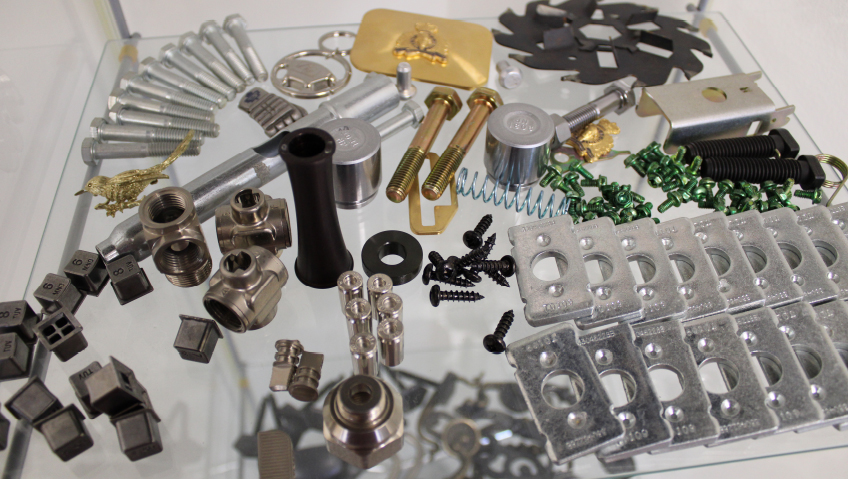If you have worked in manufacturing for any length of time you have probably come up against the significant challenge of finding and retaining talented employees.
And while recruiting and retaining talent is a big issue for manufacturing, it also comes as a bit of a surprise because, at the same time that staffing is a challenge, many manufacturers lag when it comes to recruiting women and supporting their career development.
For instance, right now, women represent less than 30 percent of the workforce in manufacturing while in other industries women represent 47 percent of the workforce, and just one in four management positions in manufacturing are held by women. Those numbers get even smaller when you’re looking at executives, with just 12 percent of C-suite positions having women in those roles.
Jacquie Boyer, Senior Vice President and Chief Commercial Officer of Sensata Technologies, a manufacturer of sensors and electrical protection units, is one industry executive who is unsettled about the stark conditions of women representation in the manufacturing space. “Prior to COVID, the World Economic Forum was saying women were going to reach parity in about 60 years,” she told Bloomberg. “After COVID hit, it was more than 130 years. And that statistic hit me like a ton of bricks. So, it wasn’t going to happen in my lifetime. It wasn’t going to happen in my daughter’s lifetime, and it wasn’t going to happen in my granddaughter’s lifetime.”
The irony in this current state is that a lot of companies are missing out on the benefits that come with a workforce that includes women. The Manufacturing Institute, APICS (a professional supply chain association), and Deloitte surveyed 600 women in the industry and interviewed managers across the sector on the topic of women in manufacturing. The project found that companies with strong female leadership not only delivered better returns—10.1 percent versus 7.1—they also provided higher valuation to the tune of 1.76 versus 1.56 compared to companies that did not have strong female leadership. Benefits impacting the bottom line rarely go missed in business yet, by and large, companies in manufacturing have not taken advantage of this information.
So, what are some of the obstacles that prevent women from being a bigger part of the manufacturing industry? One of the big ones is lack of flexibility in work scheduling, including parental leave.
The availability and affordability of childcare is a hurdle for families in many industries, but especially in manufacturing and production roles, where work tends to be on an in-person shift-based schedule. Also consider that many women in these roles are single parents, says Allison Grealis, founder and President of the Women in Manufacturing Association.
“Many of them are on their own supporting their families,” Grealis told Manufacturing Dive. “So, the more that we can intervene and help them from an early stage in their career so that they can be successful and rise within their organizations and in this industry, the better for all of us.”
Then there are the perceived biases that women are not the best fit for manufacturing. And on top of these, there is also the intimidating prospect of being the only woman on the floor.
And while the numbers are not encouraging right now, companies are working to change this and are actively seeking more ways to support women who are part of their workforce.
Some practical actions that companies are taking include creating a network of allies among men in the company to promote and advocate for women and support their career path. The Harvard Business Review describes allyship as “a strategic mechanism used by individuals to become collaborators, accomplices, and co-conspirators who fight injustice and promote equality in the workplace through supportive personal relationships, public acts of sponsorship, and advocacy.”
Progress on the gender front takes action, and leadership has an important role to play here as it can really set the tone for an organization. Important steps for leadership to take start with measuring where their company is currently at when it comes to opportunities for women. Knowing this, the question then becomes, what is the goal for the company? From there, encouraging leaders to advocate for women will create a more welcoming and inclusive environment.
Encouraging mentorship programs can also help women navigate the various stages within their manufacturing career. Mentoring is a great way to support career development because it supports knowledge growth and can provide guidance throughout an employee’s career. A mentor needs to be willing to take on the growth and development of the person they are mentoring and be willing to share guidance and advice. There are different approaches to mentoring, formal and informal. Formal tends to be more program-based and focuses on a specific purpose. Informal mentoring is more unplanned and open-ended; it is also generally driven by the person who is seeking a mentor.
In addition to mentoring and allyship, networking, both inside and outside of a particular company, is another important component that can support women in manufacturing. And while women leadership and network programs have become more common in white collar work environments, they are just as badly needed in the manufacturing space as well as in construction and the skilled trades.
Barb Willoughby, Director of Operations at ATS, an automation solution provider, in Cambridge, Ontario, meets with a dozen women every two months across a variety of industries to share what they have learned. Willoughby talks about the benefits that come from this networking group:
“Having conversations about what processes and initiatives you’ve tried and learning from one another is one of the biggest benefits of the peer council,” she told The Globe and Mail. In addition to this connection, she also has a women’s resource group at her company that helps women along their career path as well as supporting women who are in leadership roles.
“Creating that awareness that there are other women in our organization was significant. It has surprised me. Hearing the humbleness of their stories and seeking advice, asking, ‘in this situation, what would you do?’ It’s been very inspiring.”
When it comes to recruiting women, the success factors are much the same as they are for men. That includes presenting manufacturing careers to younger people. While there are many active campaigns in schools, by and large, experts agree that young women feel left out when it comes to encouragement to pursue a career in manufacturing. More inroads need to be made in local schools and colleges. Scholarships can raise the profile of a local company and also provide opportunity to get younger workers in the door, while boot camps that focus on a specific manufacturing process can provide hands-on learning to expose people to different jobs in manufacturing.
Are there women who help promote these scholarships and boot camps to put a female face to the issue? Yes there are, in some cases.
Changing the perception of manufacturing work is also important not just for attracting women to the industry but for overall improvement in recruiting. The ugly truth is that manufacturing work is seen as dark, dirty work. To help change this point of view, the Canadian Manufacturers and Exporters association is using female role models within the industry to promote recruitment through focusing on the sector’s high levels of career satisfaction as well as lower pay gaps.
The bottom line for manufacturing is that to meet the growing recruitment and retention gaps, it has to expand beyond its traditional workforce, namely men. And while there is some movement now to make manufacturing a more welcoming industry for women, the current rate won’t do it. The Manufacturing Institute is predicting that 2.1 million jobs could go unfilled in 2030 at a cost of potential $1 trillion; that’s practically around the corner.
When staring down these numbers and knowing the potential benefits women bring to companies, finding more ways to encourage them to join manufacturing will be a matter of survival for the industry.






